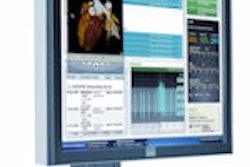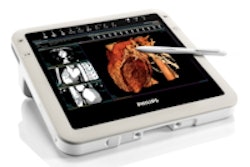CHICAGO - The value of a DICOM CD to an injured or critically ill patient being transferred from one hospital emergency department to another is determined by the quality of the media on which it is printed, as well as the ability of its contents to be efficiently viewed by every clinician who needs to see it.
If the CD becomes damaged or cannot be viewed, is misplaced by hospital staff, or is difficult to import into PACS, treatment of the emergency patient may be delayed and imaging procedures may need to be repeated. DICOM CD failure indirectly can be a costly proposition for patients and payors.
These facts are well known but rarely quantified. Emergency radiologists at Brigham and Women's Hospital in Boston provided statistical insight into the importance of using high-grade medical media and initiating a protocol for efficient importing of DICOM CDs into PACS in two separate presentations at the RSNA annual meeting.
Utility of external CT imaging on DICOM CDs
At 747-bed Brigham and Women's Hospital, the volume of DICOM CDs of CT exams arriving with emergency patients to its level I trauma center has been steadily increasing. Because many of these studies require reinterpretation by emergency radiologists and some are unviewable, a prospective study was undertaken to determine the volume and type of CT exams accompanying emergency patients on DICOM CDs and the frequency and reasons for repeat imaging.
All outside CTs brought to emergency radiology on DICOM CDs were evaluated during a four-month period starting in August 2007, Dr. Jeffrey Sung told session attendees. This represented a total of 425 CT studies of 255 patients transferred from more than 60 hospitals. Forty-four percent, or 111 of these patients, were admitted to the trauma center.
On average, 2.8 CTs per day were received. The majority of images were head CT exams (approximately 40% of the total), followed by exams of the abdomen and pelvis (approximately 21%), cervical spine (approximately 16%), and chest (approximately 14%). Maxillofacial, lumbar spine, and thoracic spine comprised the remainder.
Of the 122 procedures that needed to be repeated for 99 patients, the majority were head CT exams (60) and cervical spine CT exams (25). Reasons for repeating the exams included imaging issues (poor image quality and/or lack of multiplanar reconstructions), clinical issues (further characterization required), IT issues (faulty media, difficult user interface, and poor navigation tools), misplacement, need for operative planning, and inability to import into PACS.
"What was alarming and of great concern to us was the fact that we could have avoided performing repeat CT exams for 32% of the patients," Sung said. "This exposed patients to an additional CT radiation dose, the additional cost of a CT exam, and from the perspective of our hospital, placed unnecessary strain on the resources of our emergency imaging facilities and technologists." A repeat exam was defined as the same procedure performed within a 24-hour period after the patient was admitted to the emergency department.
Percentage of avoidable repeat CT exams of emergency patients
|
The estimated cost to repeat the CT exams was not included as part of the study.
However, Sung and colleagues did evaluate the number of studies that either lacked an accompanying radiology report or had discrepancies. They determined that the DICOM CDs of 40 patients did not contain any radiology report, nor were findings communicated by written or verbal communication. Reports of 27 CT exams contained discrepancies.
CD-to-PACS import protocol design
The findings of the outside CT study headed by Sung confirmed the need to develop a fast, efficient, low-cost protocol to import outside CDs into the hospital's PACS, starting with emergency radiology. As with film, an emergency patient's DICOM CD needed to be viewed by multiple people, typically including an amalgam of emergency physicians, one or more members of the emergency radiology team, subspecialty radiologists, and surgeons needing to do preoperative planning.
Each physician would be required to load the contents of the CD on a viewing station. "CDs impeded our use of them, because the viewing programs they contained often had unfamiliar interfaces, often needed to be viewed on nondiagnostic monitors, and limited comparison with local prior exams," Dr. Jonathan Wang explained. "Importing these studies into PACS would improve workflow by not wasting physicians' time and enable enterprise distribution and archiving."
Prior to implementing a procedure for DICOM CD-to-PACS importing, a study to test the proposed method was performed. "The CD import time using existing processes was prohibitively long, and we wanted to make sure that the procedure we proposed would make a difference," Wang said.
The procedure began by creating an order in the RIS (IDX/Centricity RIS, GE Healthcare, Chalfont St. Giles, U.K.) for the CD of a patient being admitted. This would be performed by the 24/7 emergency radiology secretary, utilizing import software (Open LiteBox Administrator, Sorna, Eagan, MN) to reconcile the DICOM header and import the study into the PACS (Centricity PACS, GE Healthcare).
Fifty external DICOM CDs, 70% of which included CT exams, were obtained at random from Brigham and Women's film library. Forty-seven of the 50 CDs could be loaded using both the CD viewing and CD import methods. The number of images ranged from one to 1,983, with study sizes ranging from 1 MB to 636 MB.
A pilot CD-import implementation was conducted between July 6 and September 30, 2008. From a total of 495 emergency patients with CDs, 501 CDs from 424 patients could be opened and imported. Fifty-four percent could be imported into the PACS in less than two minutes, and 80% could be imported in less than five minutes.
Time to import DICOM CDs into PACS
|
The CDs opened directly on a workstation were slightly faster for each category. However, if the number of times they needed to be opened on different workstations was factored in, the total time to open for viewing would change dramatically.
"The downstream benefits outweigh the initial time investment, not to mention cost savings," Wang said. "It saves radiologists time and we have received positive feedback from everyone involved."
The pilot DICOM CD-to-PACS import procedure was formally implemented on September 30, 2008.
By Cynthia Keen
AuntMinnie.com staff writer
December 3, 2008
Related Reading
PACS gateway for outside studies speeds trauma treatment, November 3, 2008
Testing procedure improves usability of DICOM CDs, January 22, 2007
Copyright © 2008 AuntMinnie.com



















